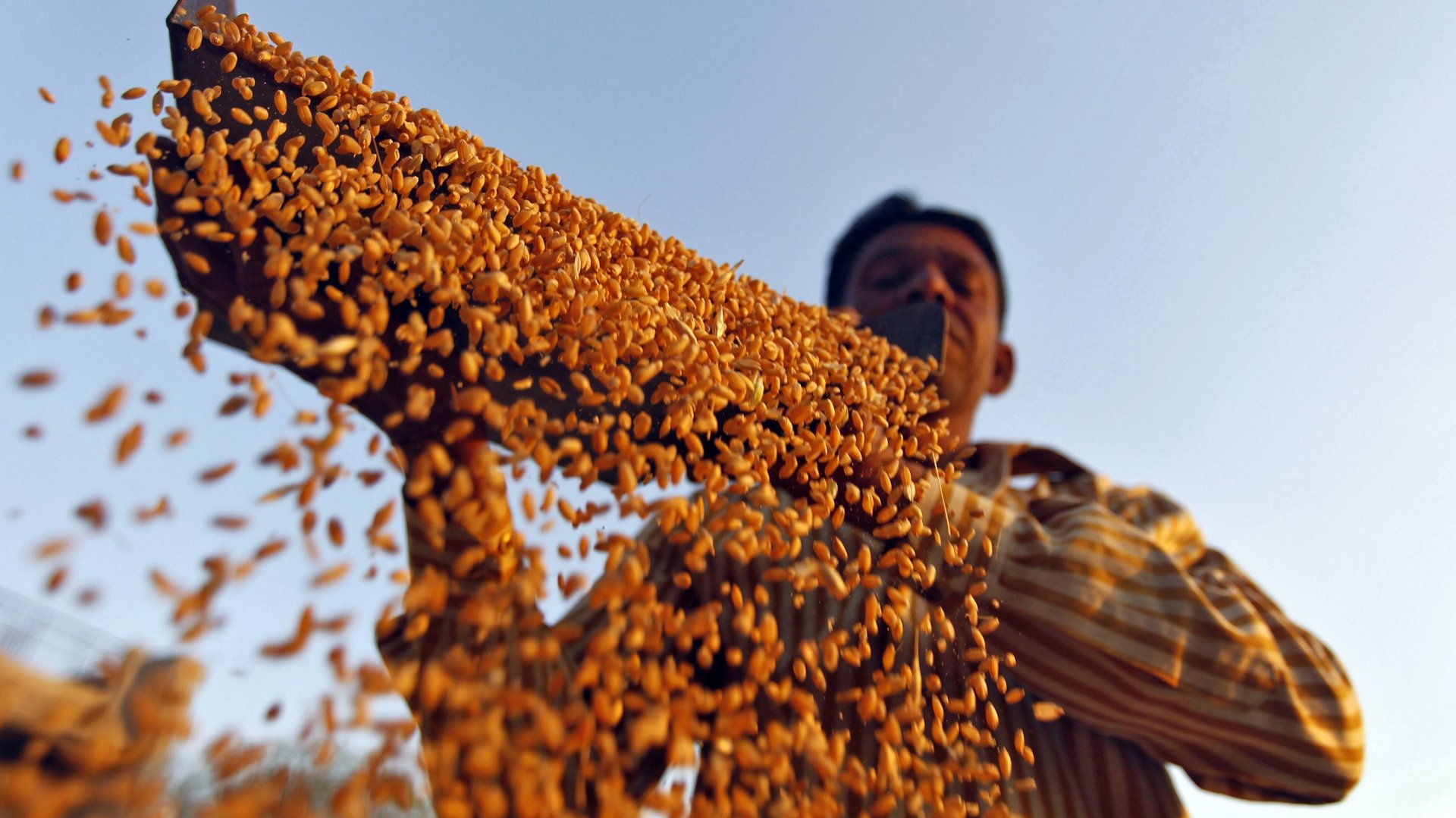The costly flip side of India becoming an important wheat exporter
India exporting wheat to more parts of the world is putting upward pressure on its domestic prices.


India exporting wheat to more parts of the world is putting upward pressure on its domestic prices.
Before the Russia-Ukraine war broke out, India, the second-largest producer of the foodgrain, only accounted for 1% of global exports. The conflict has now made way for it to sell its surplus wheat stocks.
Several countries queued up for Indian wheat in recent weeks: Turkey recently placed orders for 50,000 tonnes. A month ago, Egypt, the world’s largest importer of Russian and Ukrainian wheat, approved India as a new supplier looking to import a million tonnes.
Amid this spike, production in India has also fallen, primarily due to the severe heat waves in March. On May 4, the Indian government slashed production estimates by 5.7% to 105 million tonnes (MT) from the projected 111.32 MT for the crop year ending June.
These factors have cumulatively caused wheat prices to rise sharply by 15-20% in the country over the past few weeks.
A major staple foodgrain, second only to rice, wheat is consumed across India. It is also a key ingredient of food products like bread, biscuits, rotis, and more. Consumers across the board feel the pinch when its prices rise. And it is bad news for a country that has already seen consumer food price inflation more than double since March 2021.
What’s next for India’s wheat exports?
With Russia, the world’s largest wheat exporter, grappling with sanctions, India will become an important alternative source of the foodgrain even more, especially with its improved crop quality.
“Earlier, India was not known for its quality wheat, but India’s wheat is now as good as any high-quality wheat from other major global suppliers, and that’s because of new seed varieties,” Gyanendra Pratap Singh, chief of the Indian Institute of Wheat and Barley Research, told Business Standard. Better farm practices and advanced machines have also helped.
Farmers are rejoicing as selling to private traders instead of the state stockpiler is more lucrative. However, in the long run, becoming a key wheat exporter may involve more perils than perks.
Already, India has entered a slew of new markets like Yemen, Afghanistan, Qatar, and Indonesia. China has, meanwhile, warned of a “worst in history” winter crop. Parts of the US could also see production suffer due to a drought.
If more buyers enter the market, the pressure on India will mount. And if this year’s monsoon is anything like last year’s—poor and patchy—that would spell even more trouble for rising prices.